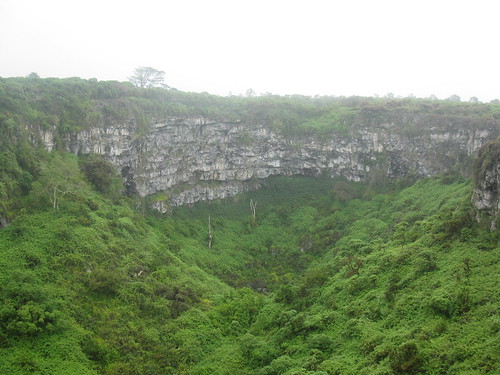AGU 2011 abstract: Controls on the hydrologic evolution of Quaternary volcanic landscapes
The following talk will be presented in the 2011 AGU fall meeting session on “EP41F. Posteruptive Processes Operating on Volcanic Landscapes I” on Thursday, December 8th from 9:15 to 9:30 am.
Controls on the hydrologic evolution of Quaternary volcanic landscapes
Anne J. Jefferson and Noemi d’Ozouville
1. Geography and Earth Sciences, University of North Carolina at Charlotte, Charlotte, NC, United States.
2. UMR 7619 Sisyphe CNRS & UPMC, Universite Paris 6, Paris, France.
Conceptual models that explain the evolution of young volcanic landscapes require the prominent inclusion of processes which affect partitioning of water between surface and subsurface flows. Recently emplaced lava flows have no surface drainage, with infiltration to groundwater as the dominant hydrologic process. Older volcanic landscapes are often dominated by extensive drainage networks, fed by permanent or intermittent streams, which have deeply dissected the constructional topography. Drainage density, topography, and stream and groundwater discharge provide readily quantifiable measures of hydrologic and landscape evolution on volcanic chronosequences. We will use examples from the High Cascades, Galapagos, and elsewhere to illustrate the trajectories and timescales of hydrologic evolution.
We suggest that the surface-subsurface water partitioning is a function of volcanic architecture, climate-driven processes, and water-rock interactions. We will show that in mafic volcanic areas, climate-driven processes (such as weathering and dust deposition) control landscape evolution, while explosive eruptive products may be important for local hydrology. In the High Cascades, where precipitation exceeds 2 m/yr, landscape dissection has obliterated constructional morphology within 1 million years, while in the more arid Galapagos, million year old landscapes are largely undissected. Conversely, localized groundwater perching on pyroclastic layers or paleosols has been characterized in the Galapagos, but not in the Cascades, where pyroclastic activity is more limited in extent. In areas where explosive activity, including phreatomagmatism, dominates volcanism, the evolution of hydrology and topography occurs much more rapidly than in landscapes created by effusion. Hydrothermal circulation and water-rock interactions may play an important role in reducing deep permeability and altering subsurface flowpaths in some volcanic landscapes. Observed chronosequences can be complicated by juxtaposition of different age deposits, post-emplacement faulting, uplift or subsidence, and climate change, so detailed understanding of the landscape’s geologic history is a prerequisite for appropriate interpretation of hydrologic evolution in volcanic landscapes.

A "pit crater" in the highlands of Santa Cruz Island in the Galapagos shows preferential vegetation growth at the contact between lava flows, probably where water is more available. Photo by A. Jefferson.
